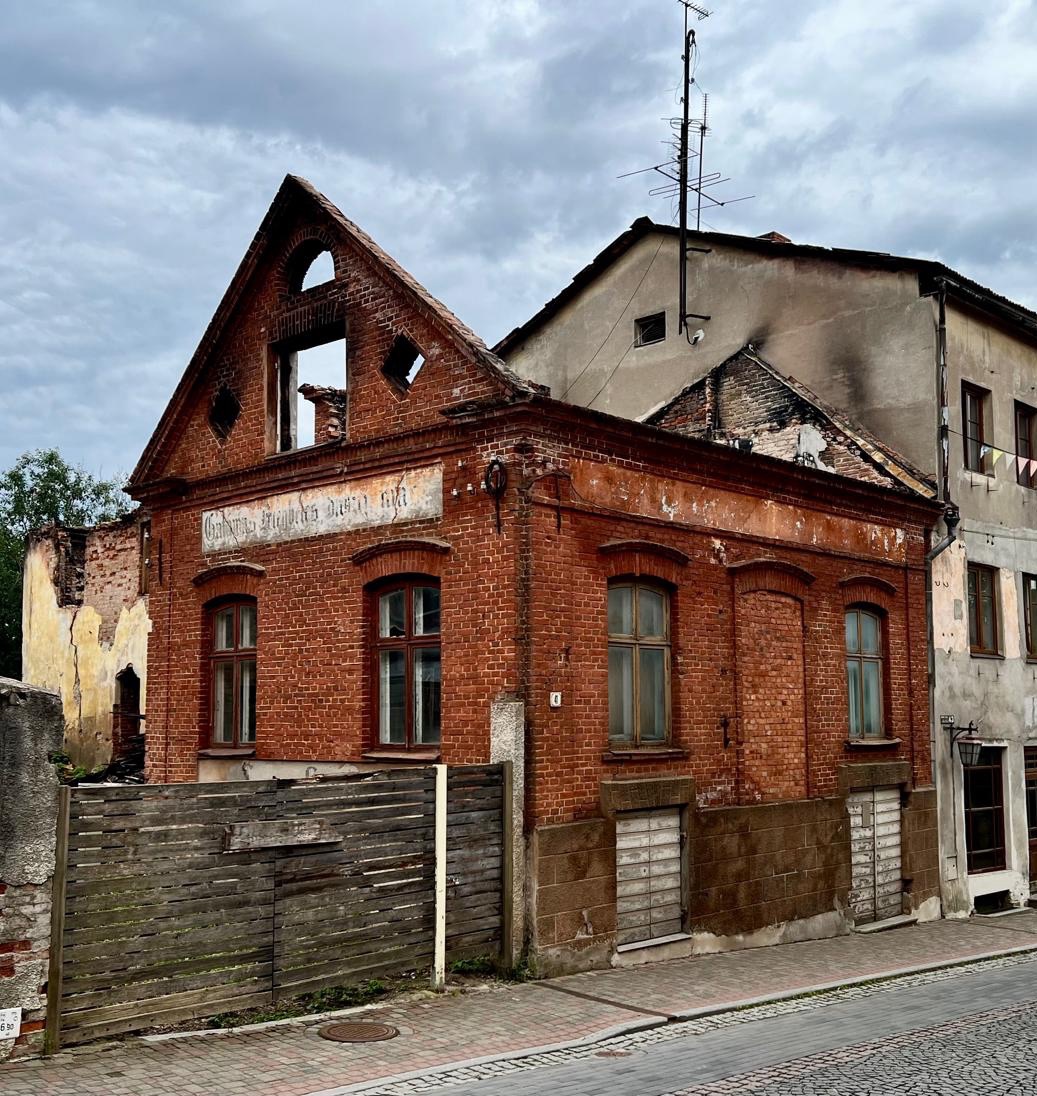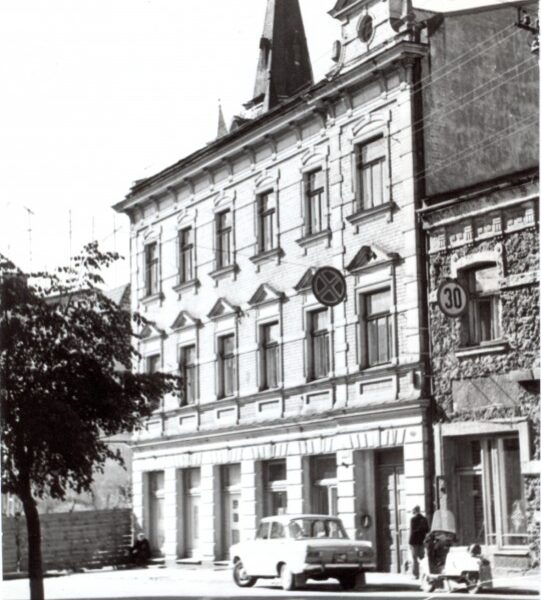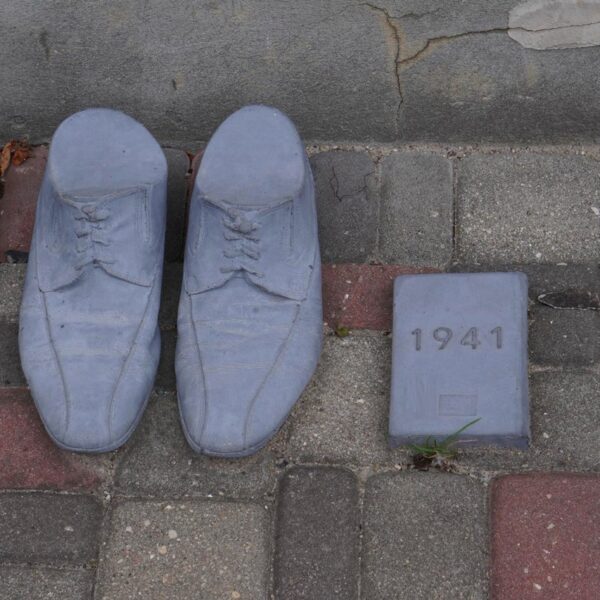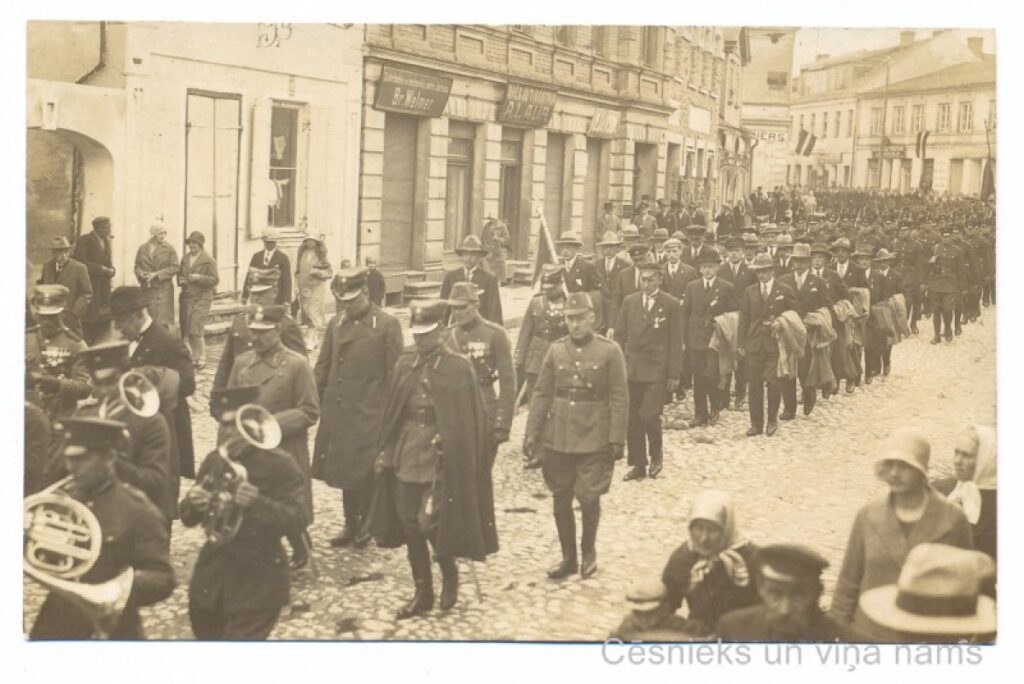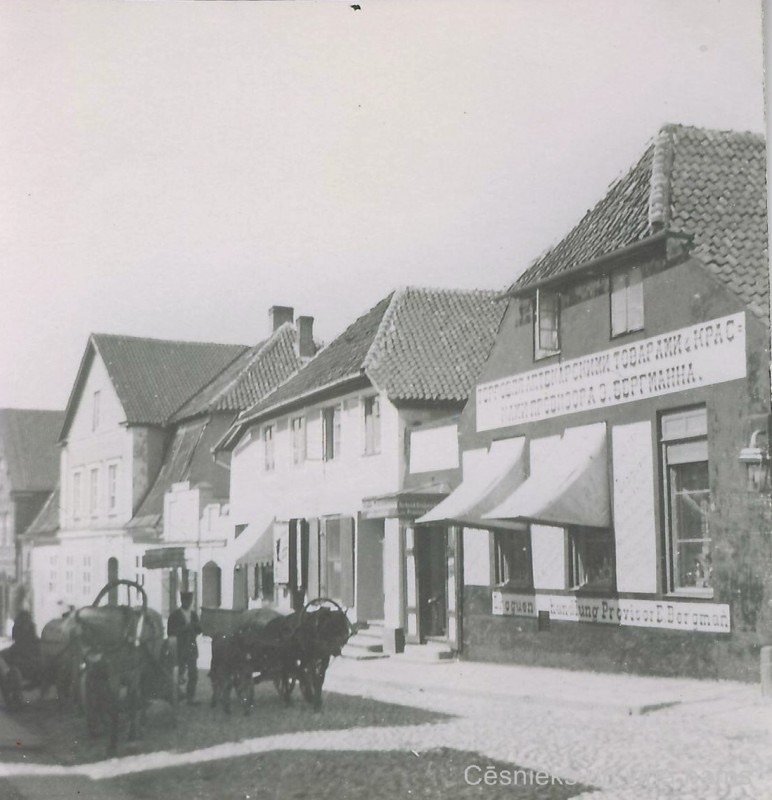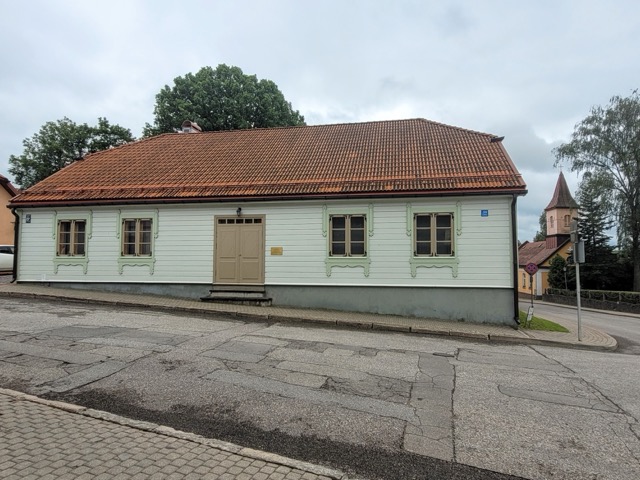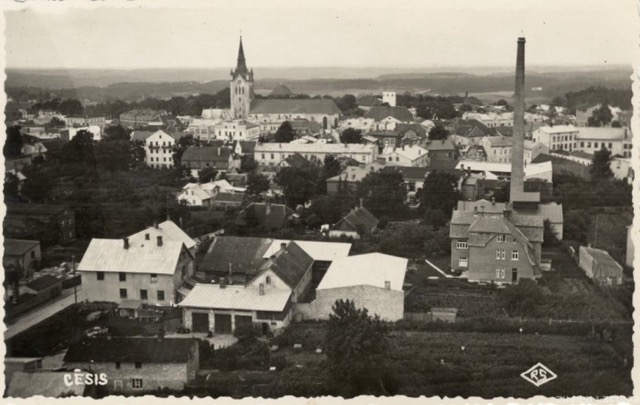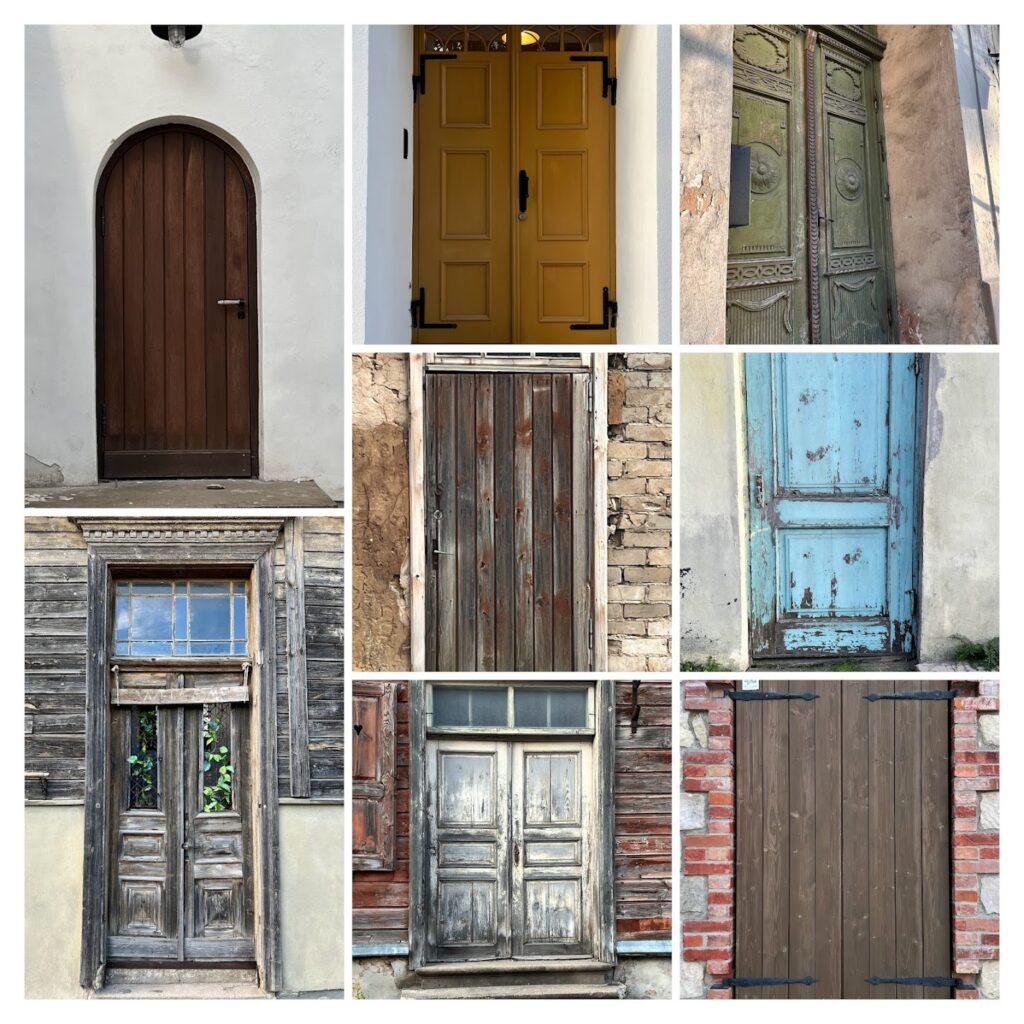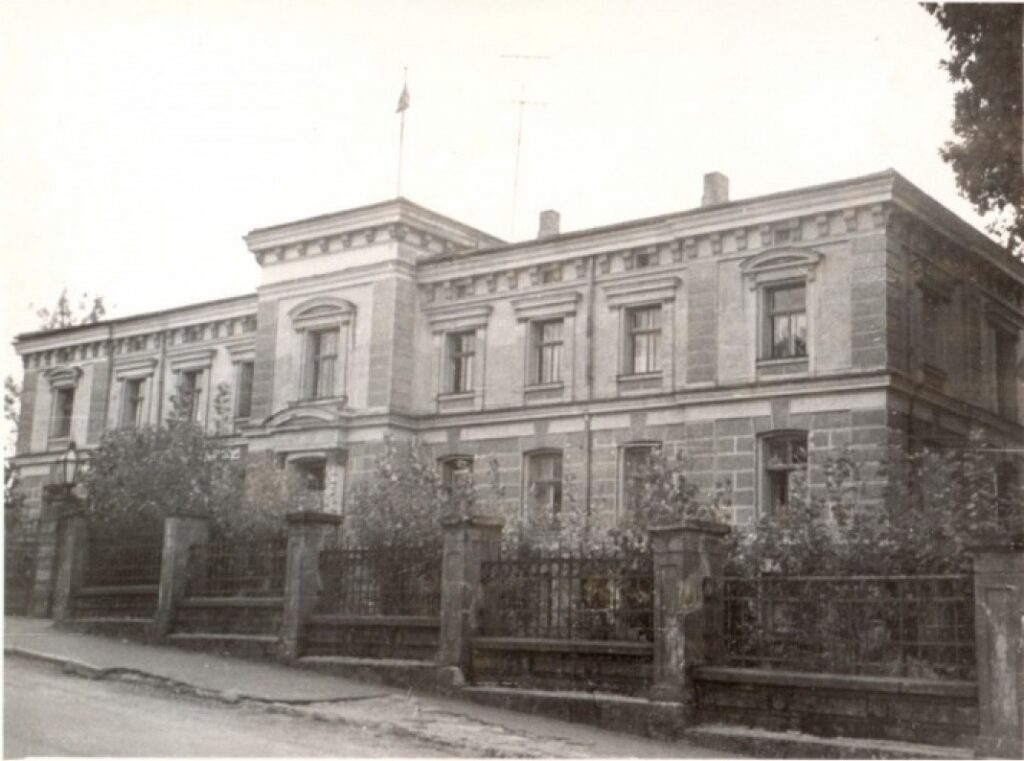The severely damaged building at 41 Riga Street holds stories of Cesis town life spanning several centuries. Within these walls have mingled the conversations from merchants’ shops, steam from the bathhouse, merriment from the pub, and the quiet sound of the sculptor’s chisel. As a small but significant link in the chain of Cesis town history, this building has witnessed at least three changes of state power, two world war storms, and countless owners.
The history of the plot began in the second half of the 18th century, when in 1768 it came into the possession of former Cesis councilman Michael Friedrich Lamberg. At that time, this piece of land and the adjacent one (now 43 Riga Street) belonged to one owner. The 1789 Cesis plan noted that each plot contained one house. A typical town house story began with a mortgage – in January 1802, Lamberg mortgaged his properties for 80 years for 3000 Albert thalers to Cesis homeowner and 3rd guild merchant Johann Ulrich Lange.
However, in financial matters, fate tends to intervene unpredictably – soon the properties ended up at auction, and in October 1816, they were purchased for 730 silver rubles by Cesis mayor and merchant Johann Ernst Huhn. After Huhn’s death, the properties were registered in 1821 as “Huhn’s inheritance estate,” which was then acquired by the city of Cesis itself at an auction in 1825. At this point, historical documents reveal to us that there was no longer a building on one plot, but on the other – today’s 41 Riga Street – stood a stone residential building.
Historical records are silent about the city’s management of this property for half a century – as often happens with less notable buildings, their daily life doesn’t make it to the pages of chronicles. However, in 1875, this real estate was purchased at auction for 1500 rubles by Luise Peterson, born Grosvald. Mrs. Peterson and her husband Hugo borrowed 1000 rubles to make the purchase – a financial practice of the time that indicates the value of real estate and the growth of the city.
The building’s history became particularly interesting at the beginning of the 20th century, when in 1909 it came into the hands of Reinhold Gustav Tancher. Tancher was not an ordinary Cesis resident – he was the director of the prestigious Livonian Knights’ Boys’ Gymnasium in Berzaine. Although it seems that the building was more of an investment for him rather than a residence, its increase in value indicates the development of Cesis – the city board valued the property at 6325 rubles.
After multiple changes in ownership, in 1917, right during the revolution, the building was purchased by Peter Bunde, whose name is closely associated with the next period of this place. It was during Bunde’s time that the building became a public place – both a bathhouse and a tavern or pub were established there. To ensure the operation of the bathhouse, a special water connection was even built from Valnu Street, for which the city board set a fee of 10 santims per cubic meter. “Cesis Newspaper” repeatedly wrote about “troubles and scandals” in Bunde’s bathhouse and pub, which, admittedly, only attracted the attention of Cesis residents to this place.
During the global economic crisis in 1932, P. Bunde had to close his tavern due to reduced income and inability to pay taxes. He tried to adapt by offering “home breakfasts, lunches, and dinners at competitive prices,” yet the property gradually sank into debt.
After the occupation of Latvia in 1940, the property was nationalized, but the owner Peter Bunde died in December 1941, during the German occupation.
After World War II, in 1950, sculptor Fricis Esmits (1892-1972) settled at 41 Riga Street. His biography is an important page in Latvian history – in 1919, Esmits participated in the Latvian War of Independence, where with his unit at Menca manor in Northern Vidzeme, he drove the Bolsheviks across the Melnupe bridge. For these merits, he was awarded the Order of Lāčplēsis in 1922. It was for this very reason that during Soviet rule, Fricis Esmits was dismissed from his job at the Liepaja School of Applied Arts, denying him the opportunity to lead the sculpture workshop.
Esmits moved to Cesis at the invitation of his teacher, sculptor Karlis Jansons. He settled in a small one-room apartment at 41 Riga Street and worked as a cobblestone crusher in the Cesis municipal enterprise’s stonecutting workshop. Despite the restrictions imposed by Soviet authorities, Esmits continued to engage in sculpture, establishing a small workshop in the courtyard of 41 Riga Street.
The house remained inhabited until the early two thousands. Later it suffered from fires twice – in the summer of 2009 and in the spring of 2025. Currently abandoned and in a sad state.
The materials used for the description are:
Dace Cepurīte, Mg. hist., Research “Cēsnieks un jego nams”
Collections of the Cesis Castle Museum and the Central Library

